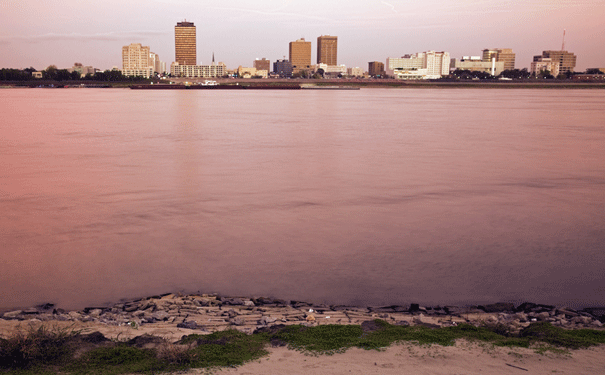
If nothing is done to save the wetlands, in time a disaster even bigger than Hurricane Katrina may result. Image: Shutterstock
Mississippi River begins to make a comeback
Steve Mathies, the executive director of the Louisiana Office of Coastal Protection and Restoration, is trying to save Louisiana from the Gulf of Mexico. Realising that something drastic had to be done, the Louisiana authorities in 2007 prepared a master plan setting guidelines for preserving the wetlands. Geologists, scientists and engineers from all over the world are currently compiling new ideas to be included in an updated master plan to be finished in 2012. The key is the muddy water of the Mississippi.
“The Mississippi River is both a blessing and a curse,” Mathies says. Even though it brings life to the region, it is also the indirect cause of the crisis, and it is essential that the river be given more space, so that it can once again flow into the wetlands and make the marsh retreat. The code word, he says, is diversion, which will slowly let the river flow into the marshlands by constructing a number of gates at the top of the levees, allowing water to flow through at high tides.
Another possibility is using large pumps to move water, sediments and nutrients from the river directly into the wetlands. The difficulty is finding the right combination of mega-projects that could make a real difference but will take a long time to construct and small projects that will make a difference immediately. While the clock I ticking, more and more land disappears into the gulf.
“If we wait to build the massive diversion projects, we’ll lose everything we have,” Mathies says. “We have to think long term, but also have to think about tomorrow and next month.” Some tough choices will have to be made, however, since not everything can be saved. Some of the diversion projects will probably flood areas where some people live now.
“We can’t save it all,” Mathies says. “The best we can do is look at what areas we can save and sustain for the long term and invest in them. But the areas we can’t save, we can’t invest in those. If we do that, we’ll lose it all.”
Many other countries will closely watch the rescue plan for the Mississippi Delta. Just as in Louisiana, many of the world’s large river deltas are sinking, including those of the Nile, Mekong, the Ganges and, to some extent, the Rhine, because of human intervention. And activities. Each is vulnerable to flooding and storms and could potentially put the lives of hundreds of millions of people at risk. To address these concerns, America’s Wetland Foundation organised an international conference in New Orleans in October 2010, with the aim of bringing together scientists, decision makers and engineers from all over the world to address the problem.
No river of money
The biggest challenge to saving the Mississippi Delta is monetary. There’s no agreed upon figure for completion of Louisiana’s restoration projects, but the U.S. government has earmarked $75.7 million (US $80 million) annually for the restoration. Yet, many scientists and advocates day that more is needed to save the ecosystem. Still, many locals see this as a small victory, as it is the first time that the government recognises the problem financially. The cleanup after Hurricane Katrina and its after-effects cost an estimated $190 billion (US $200 billion), but if nothing is done to save the wetlands, in time an even bigger disaster may be the result.
“It requires an engineering feat, but we can figure it out,” Mathies says. He says that the resources that the nation risks losing “greatly outweigh the investments.”
For Albert Naquin and the rest of Isle de Jean Charles’ inhabitants, the current state of affairs means that they may soon be the fist climate refugees in United States history. They work against the clock, as the Gulf of Mexico continues to erode the coast. In Naquin’s opinion, the Biloxi-Chitimacha tribe will soon be scattered across the country. “Wherever they move, people will marry the locals, and our Indian blood will disappear,” he says. “In a few years, our tribe will no longer exist.”







Adam Fitch
September 11, 2013
To anyone who has not seen the film Beasts of the Southern Wild, I would highly recommend it. I assume that this article was published before the film was released, as it does not mention it at all.